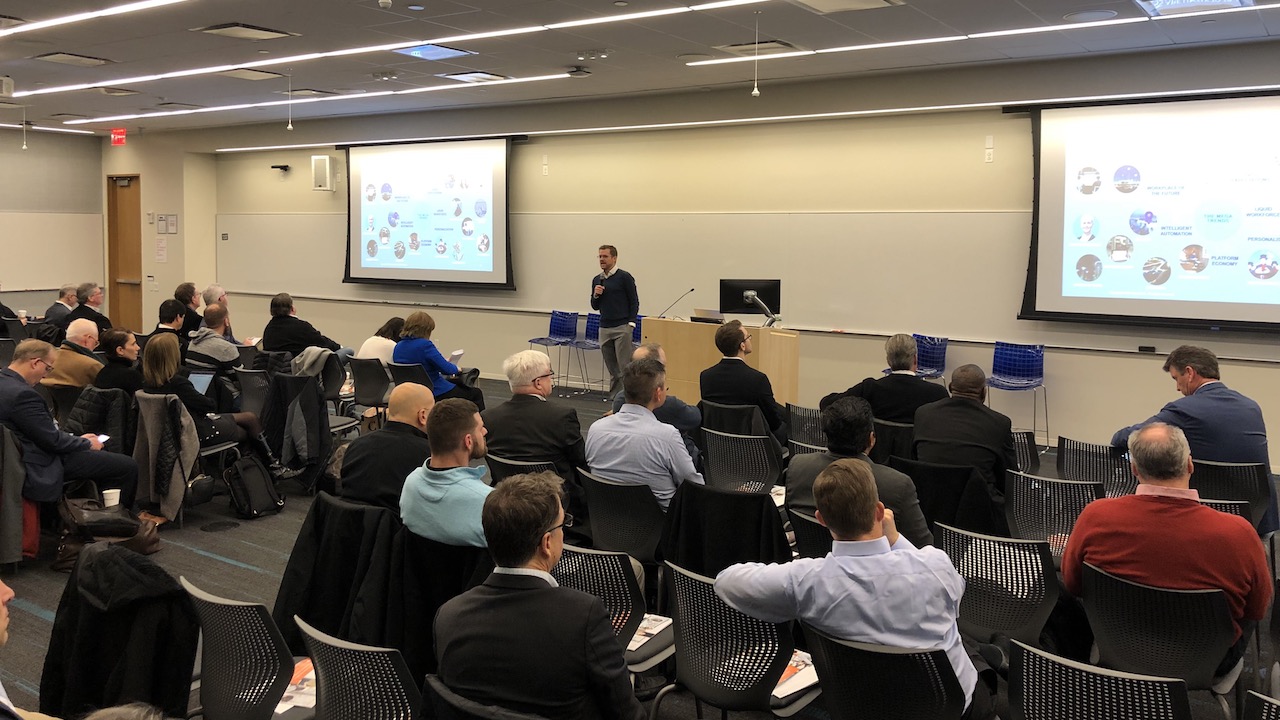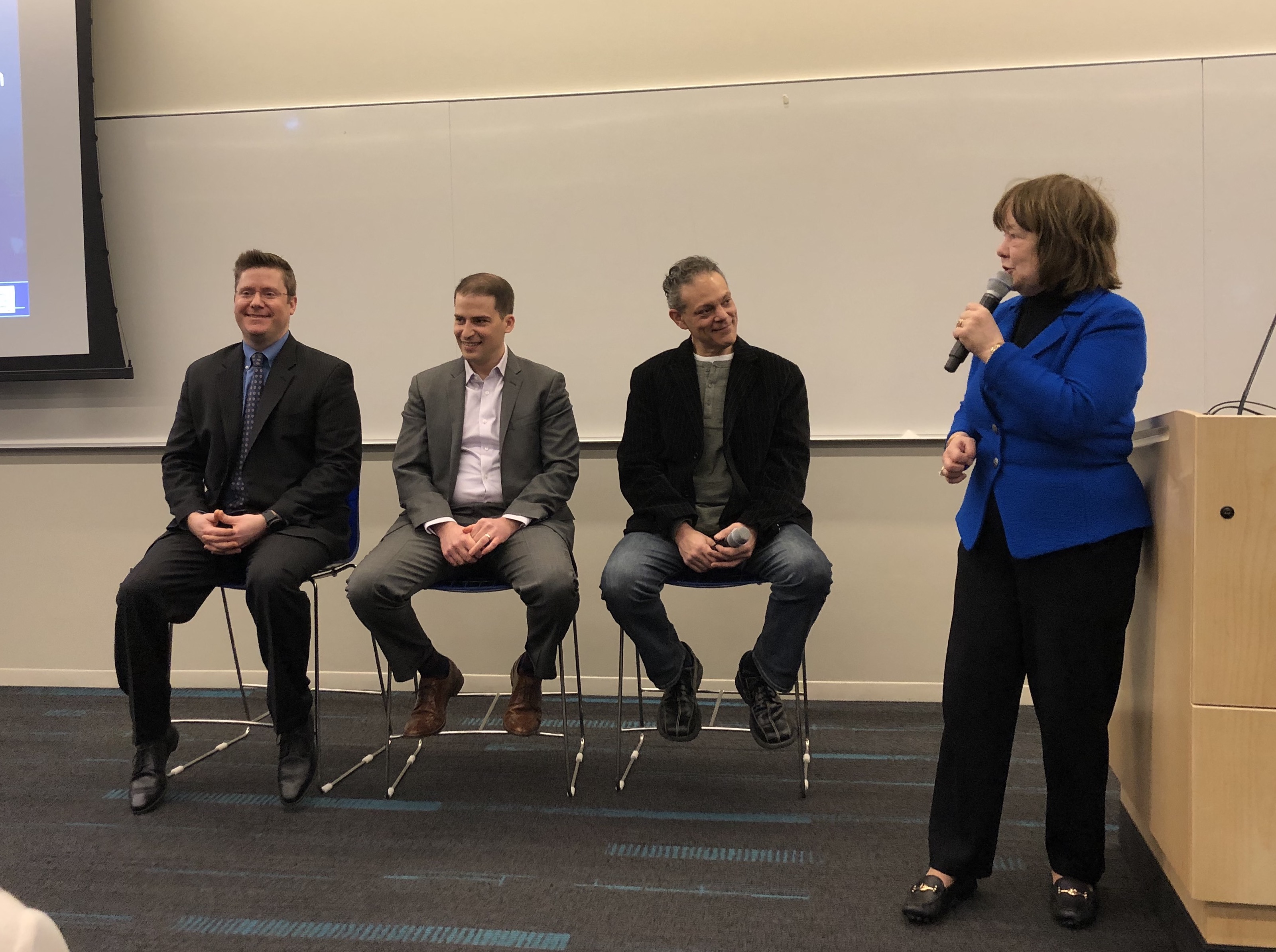On Monday morning, IMCCA’s first-ever NY Collaboration Week kicked off with a series of presentations and a panel discussion sponsored by Crestron at Microsoft’s Times Square office.

The morning began with a presentation on designing tomorrow’s workplaces by Michael Przytula of Accenture, followed by a panel discussion on the management of collaboration platforms featuring Jonathan Kornberg, Columbia University Medical Center; Austin Parker, Oppenheimer Funds; and Haydn Miller, Aetna. Lastly, Microsoft’s Rishi Arora discussed the company’s Azure IoT platform, Crestron’s Ted Colton covered his company’s latest solutions for collaboration, and Unum Group’s Brent Daniel shared how he is using both of their solutions to improve his company’s productivity and efficiency.
Here are some key takeaways from the morning’s discussions:
1. There are a lot of inefficiencies
“There’s so much inefficiency in the way that technology in the workplace works,” Accenture’s Przytula said, pointing specifically to common problems in utilizing the technology in conference rooms. “Organizations haven’t gotten around to thinking this is important because everyone is accepting of the way it has always been like this.”
2. Data will help resolve these problems
Luckily, there are now tremendous amounts of insights that can be gleaned from technology to help improve upon entrenched inefficiency. Przytula shared how Accenture built a proof-of-concept office in Dublin to closely examine how its employees used the workspace, as well as to try out new IoT technologies, such as sensors that measure the fill level of trash cans.
Arora, who is the technical solutions leader – machine learning and IoT at Microsoft, discussed how the company is refreshing its Redmond, WA campus with an “Internet of Things meets Big Data” approach that is expected to reduce energy consumption by 10–11 percent and operational costs by $2 million per year.
Unum’s Daniel covered his company’s recent restructuring that began with in-depth user feedback on how they work. And, through its deployment of Crestron’s XiO Cloud, it will be able to continuously monitor and analyze utilization of its systems for future improvements.

3. The simplest way is best
The panel, which was moderated by Dr. S Ann Earon, chairman emeritus of the IMCCA, agreed on several points, including the idea that most spaces don’t need a full-on control setup. “Integrators, I don’t see your best success coming from being able to get the lights to turn on automatically, or get the shades to drop. I see your best success as installing a system that is 100-percent reliable,” said Oppenheimer Funds’ Parker. “And if that means I have to pare back some features in order to maintain that reliability and that uptime, I’m willing to accept that. In the scale of things, you will find more success in keeping it simple being able to replicate that simplest model that you developed with the end user.”
For Aetna’s Miller, simplicity enables the ability to deploy systems rapidly. Miller said that he has standardized on self-contained units. “Nothing goes on the wall; the only thing that we need is a power and data jack behind the display and a mobile cabinet that we roll into the room. It moves our install time from days to hours.” He pointed out that, if necessary, they can decommission the room just as quickly if need be.
See other coverage of IMCCA's Collaboration Week New York here:
